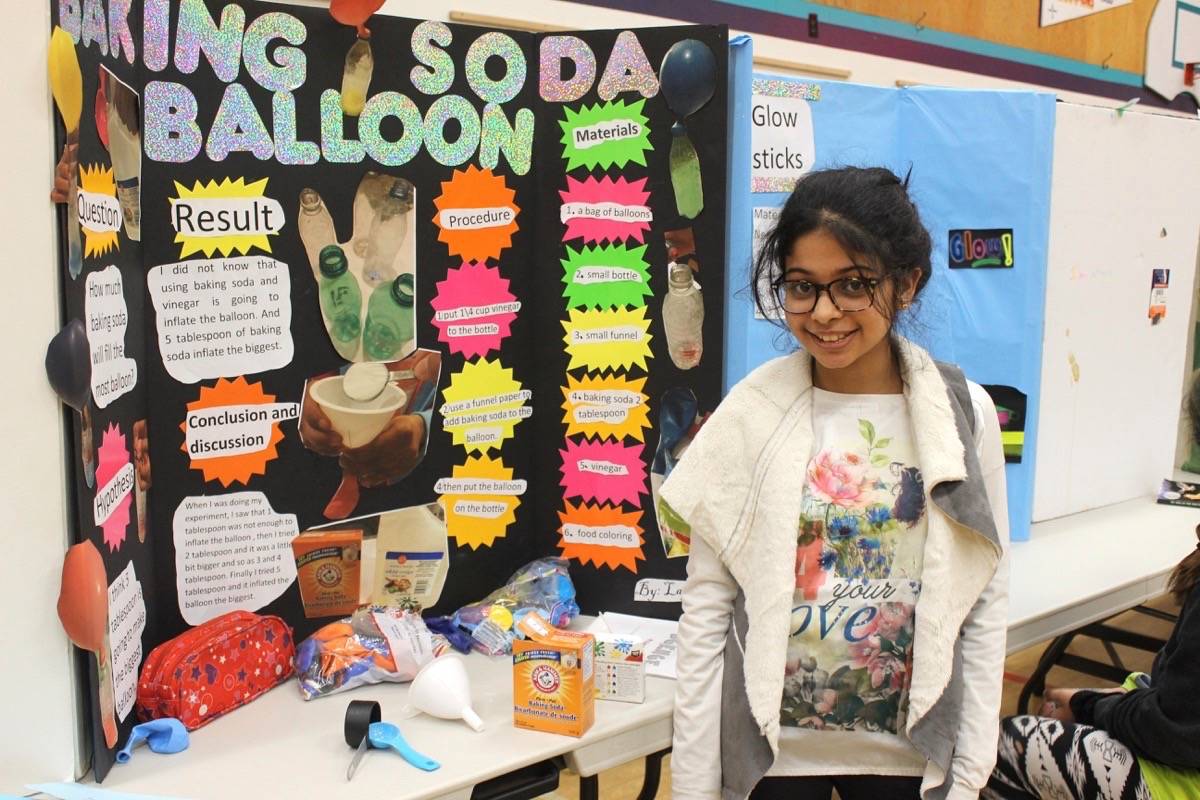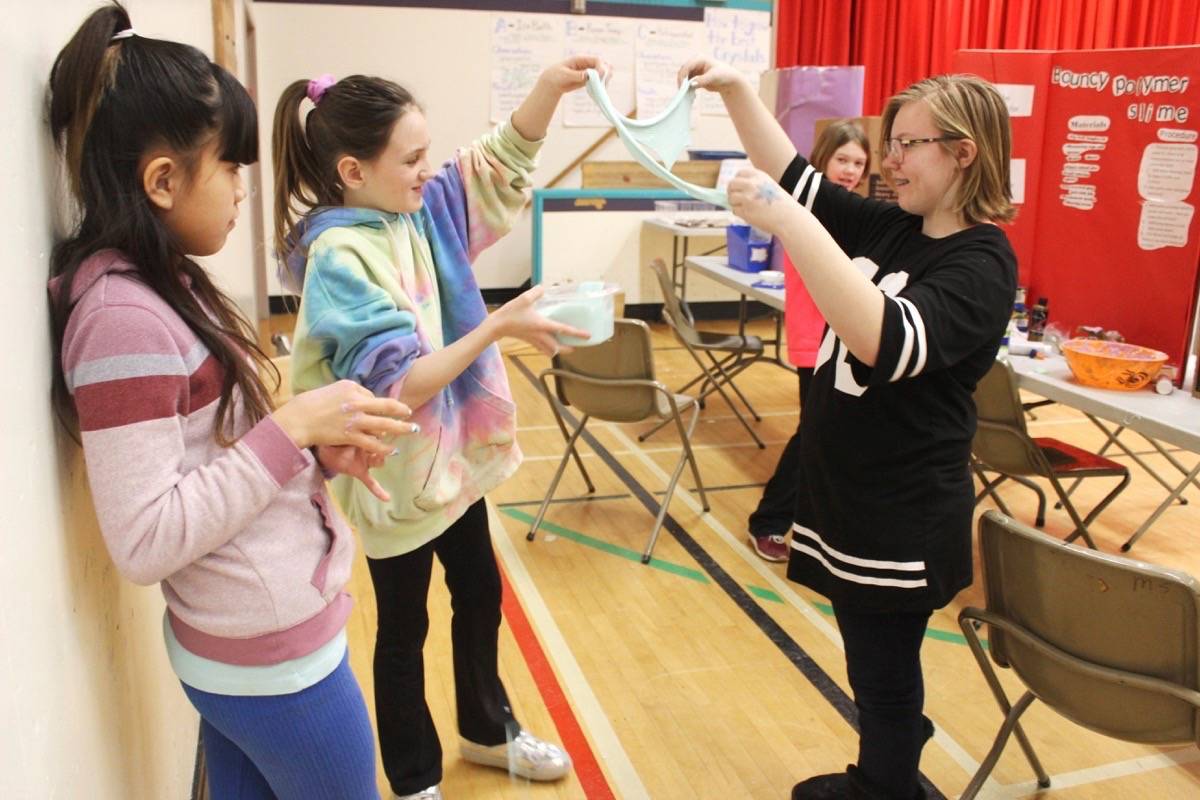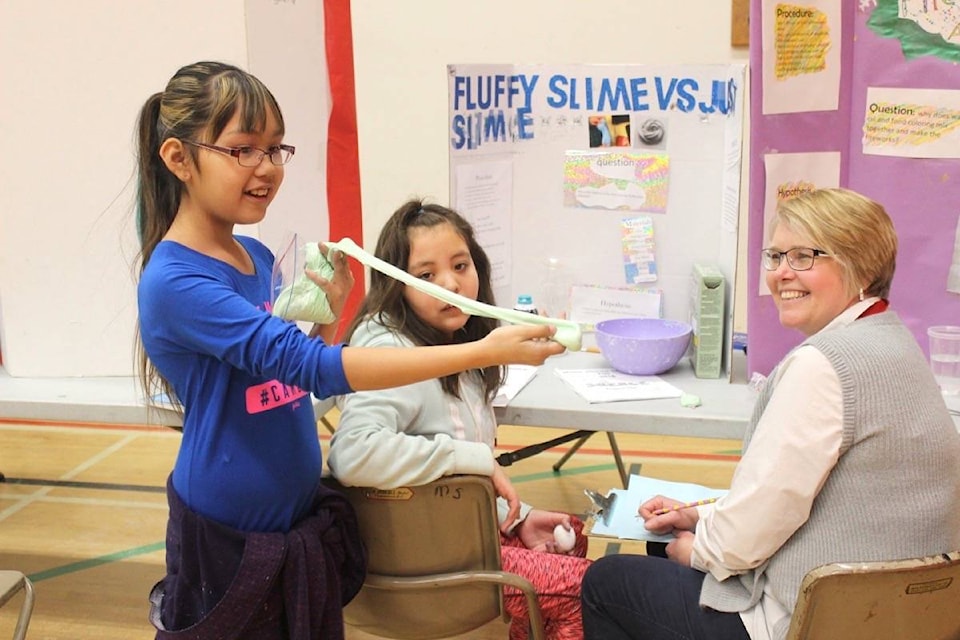On Wednesday, Feb. 21, Marie Sharpe Elementary School was abubble with activity — literally.
Everything from fuzzy slime to baking soda and vinegar volcanoes were on display, as intermediate students worked through the scientific process, testing hypothesis and recording their results.
“My favourite part was making the slime,” said Lyndelle Kequahtooway, who made regular slime and “fuzzy slime” with her science fair partner Shanelle Johnny.
Their biggest lesson: “That you don’t add just Borax, you are supposed to mix the Borax and water together first,” said Johnny.
That process of testing and making mistakes, or “experimenting” one might call it, is all part of the scientific process.
“It’s teaching kids the scientific method, understanding the role, the real nuts and bolts of science and just teaching them how to become a scientist for the day,” said Kris Beaulne, organizer and teacher at Marie Sharpe.
“They learn about taking risks, they learn hands on activities, they learn science and math, they learn about the scientific method and just have a lot of fun.”
Between the Grade 4s and the Grade 6s, Beaulne said the difference is visible.
“With the Grade 6s we pushed hard this year on creating variables. You can see the progress from earlier grades where they do something they are curious about and then as they progress they start really seeing variables and how to do a true scientific experiment.”
Students are given as much freedom as possible, and get to choose what they learn about. Projects at the school are done in the classroom, and even the primary students get involved with some of their own demonstrations.
While the projects are judged, teachers are asking students how they came up with the idea, the scientific thought behind it, how they could improve the project next time —not every experiment works as planned — and how they could relate to real life.
“It’s creating empowerment and having fun, and also about the science,” said Beaulne.


